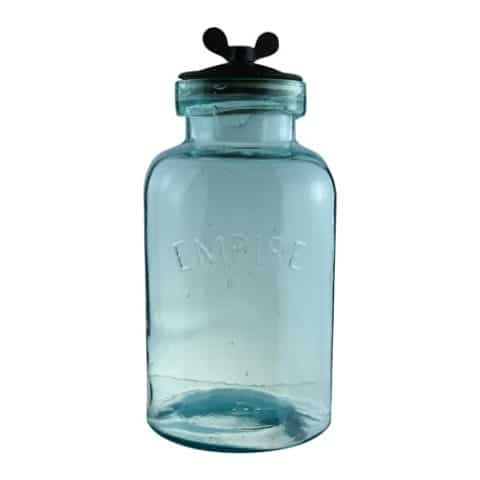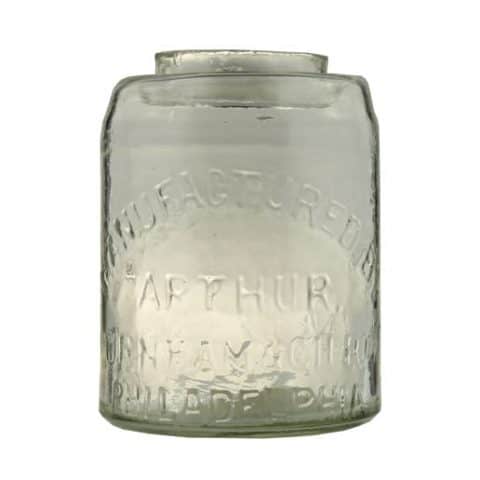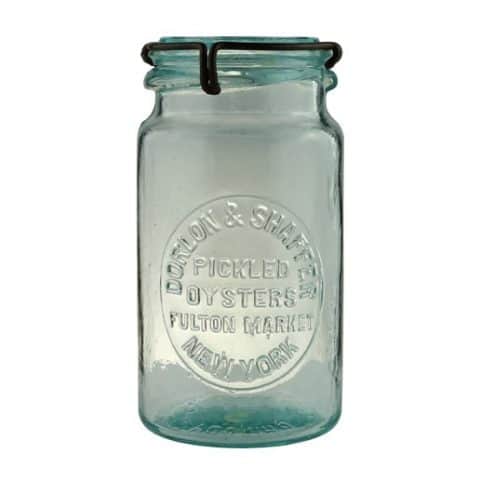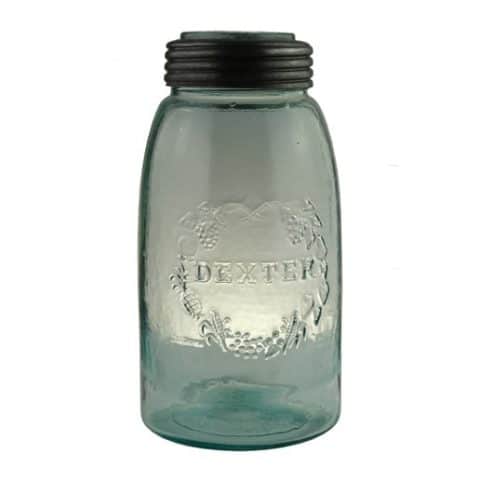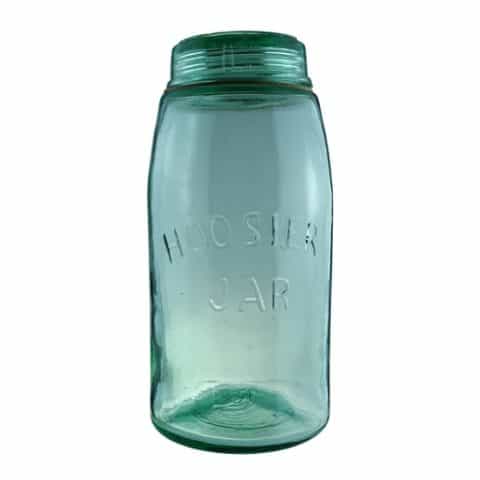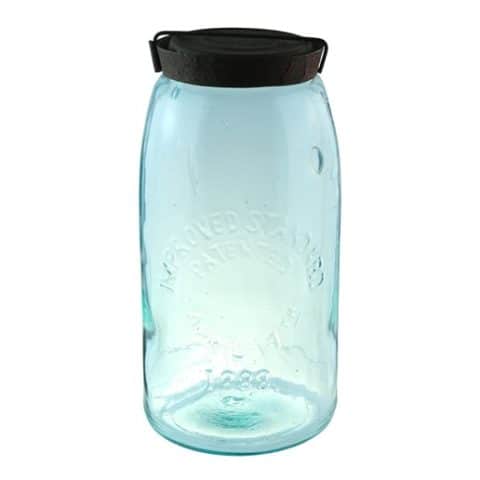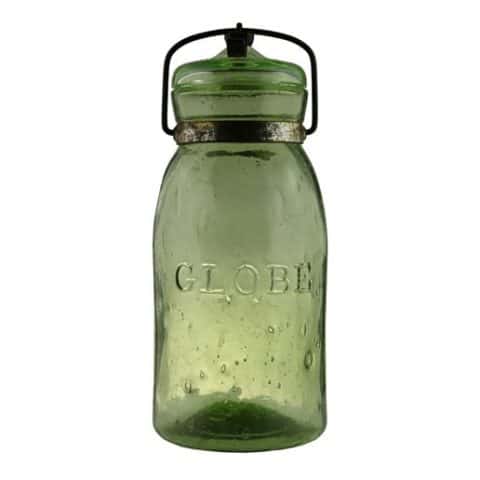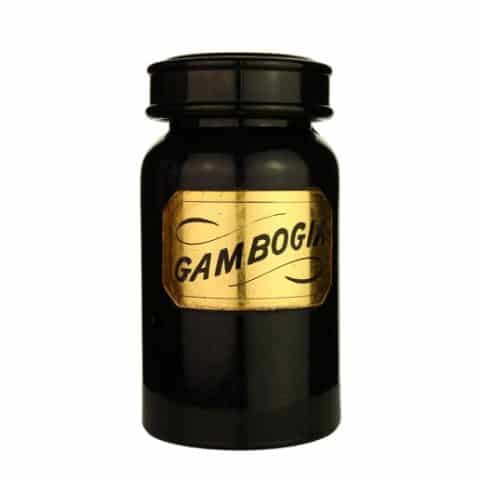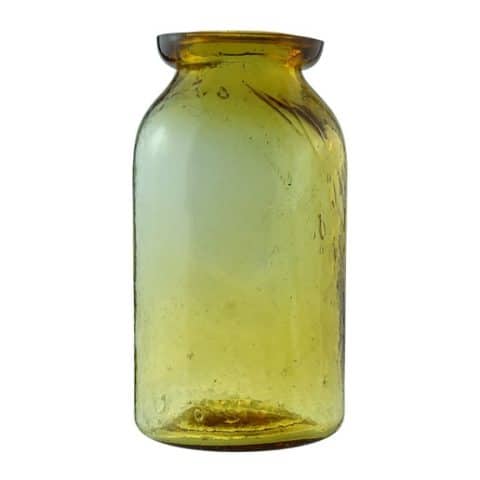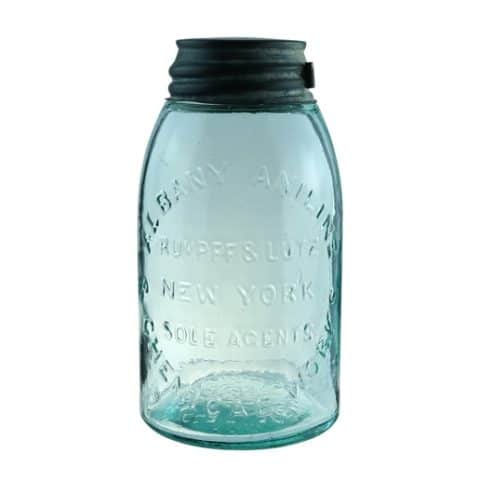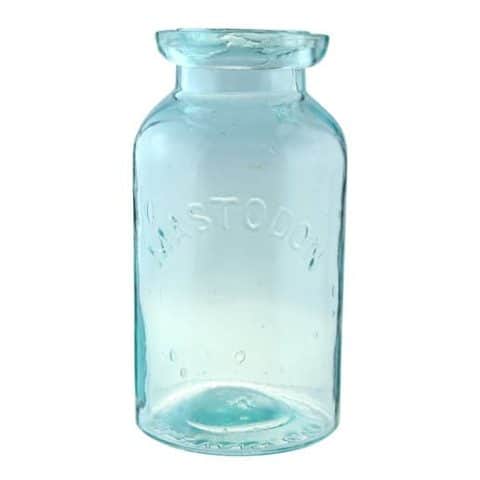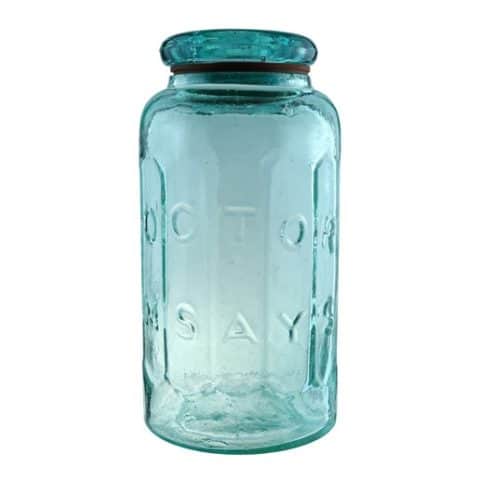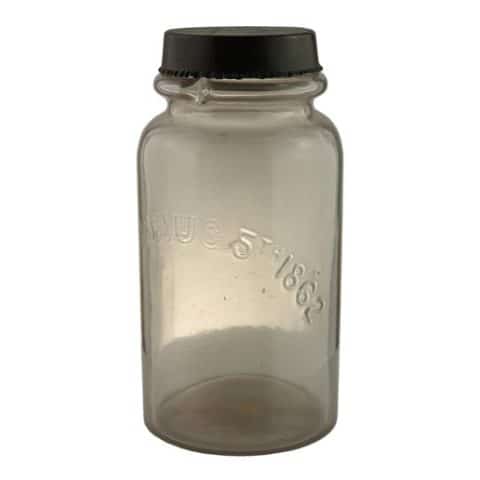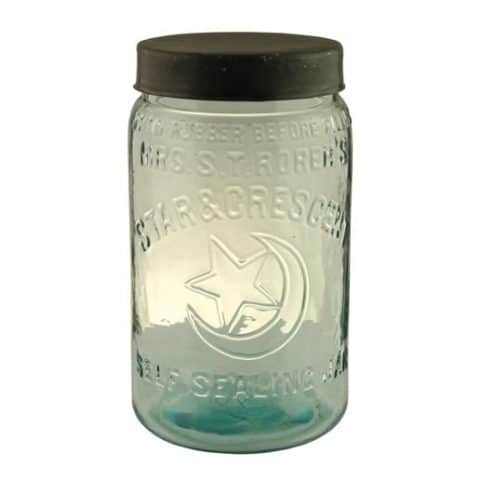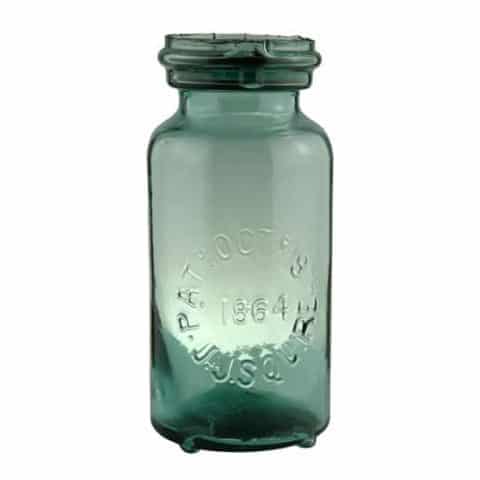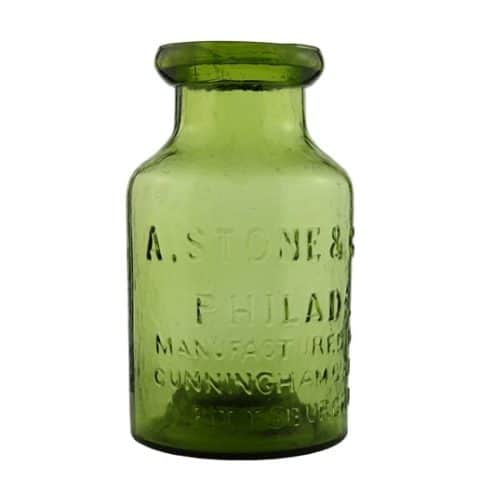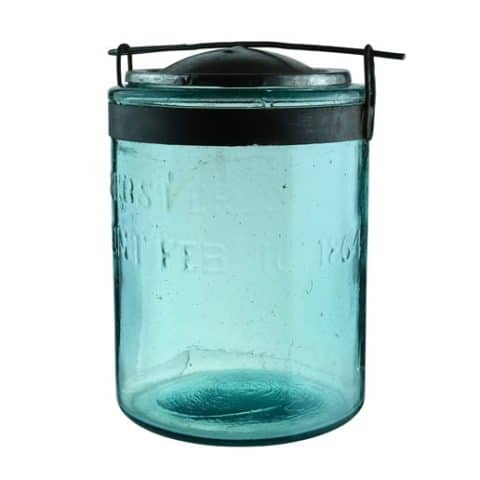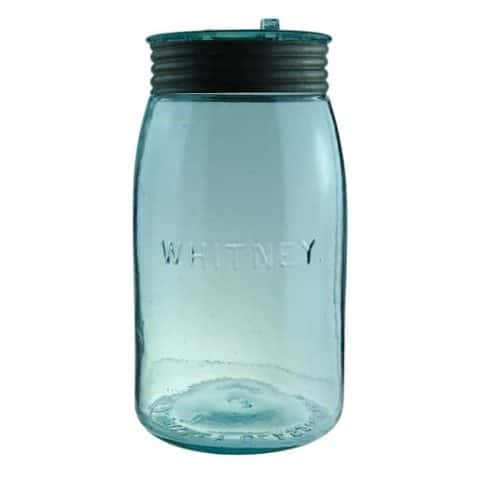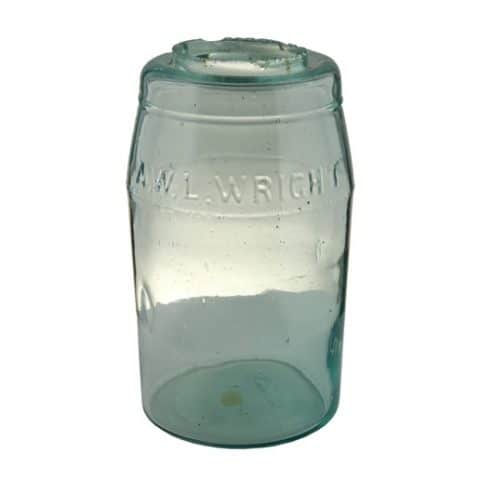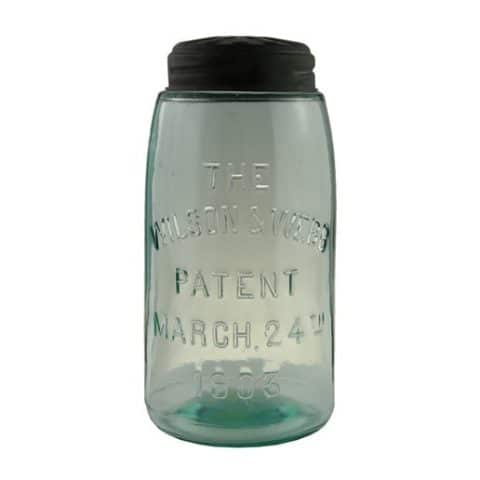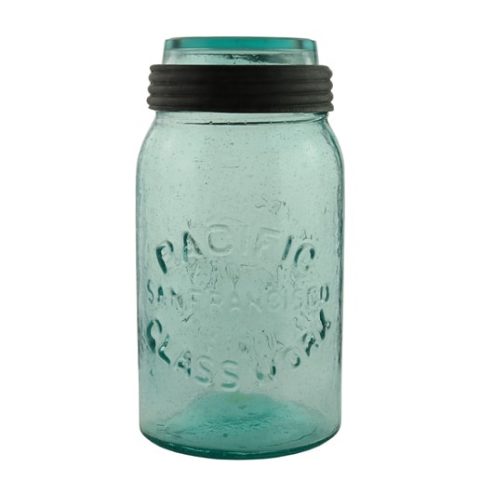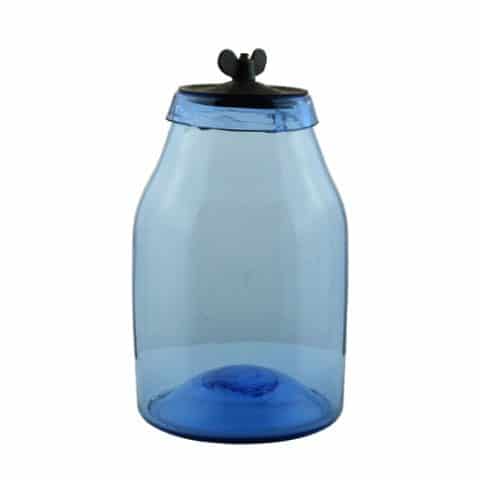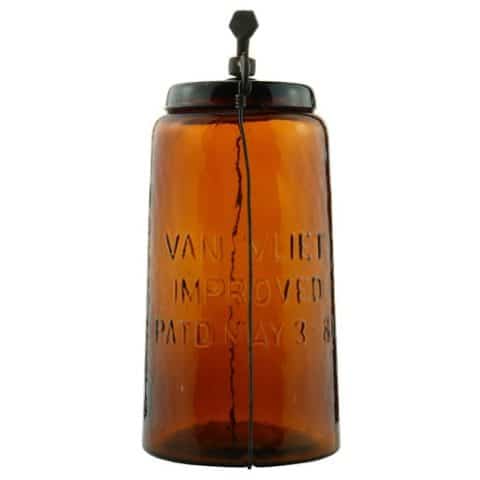H & S Phila
H & S Phila
WILLIAM HALLER PATD AUG 7 1860
Haller & Samuel, Philadelphia, Pennsylvania
Aquamarine Pint
Provenance: Jerry McCann Collection

A. R. Samuel was listed in Philadelphia directories as a glassblower prior to 1860 when he was listed as a dealer in provisions. The following year, Samuel offered patent jars to the public. William Haller joined Samuel in 1862 and their business was briefly named Haller & Samuel (H&S). They were listed as dealers in fruit located at 459 North 2nd Street in Philadelphia, Pennsylvania. The partnership was short-lived.
See and read about our museum example of a DEXTER jar made by A. R. Samuel.
John M. Cooper and William L. Haller of Carlisle, Pennsylvania, received Patent No. 29,544 for an “Improvement in Self-Sealing Fruit Cans” on August 7, 1860. The patent application said that the vessel, “could be made of glass or any other vitrified or mineral material, or it may be made of metal, such as tin.” The material for the closure was unspecified though examples found use cast iron.
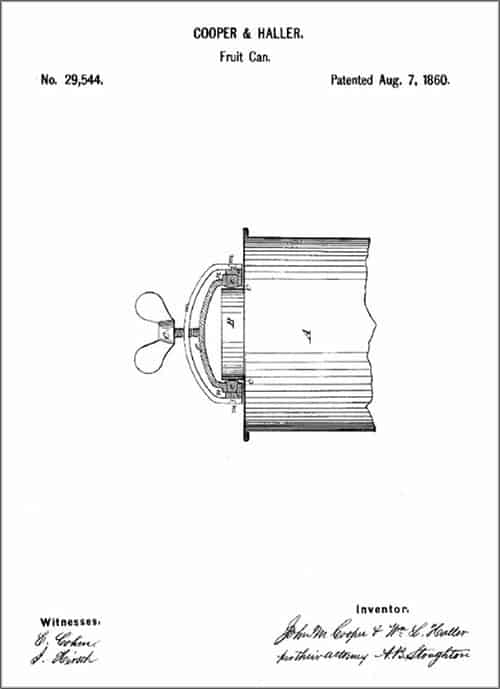
The H&S jar closure device consisted of three cast-iron parts. The first was a rounded cap that fitted over the outside of the finished jar. Inside the cap was an India-rubber gasket that fit against the outside of the jar. Above this was a yolk, the lower ring of which encircled the cap, while the curved upper section held the final part, a wing screw, that pressed against the cap. As the screw was turned, the pressure against the cap forced the gasket against the outside edge of the jars finish. This patent closure formed the basis for the jars embossed H&S as well as the initial Ladies Favorite jars. The jars were soon crowded out of the market by the much better closures of the Willoughby and Kline stopples.

Our museum example of an extremely rare pint “H&S Phila” jar is wonderful as it is in immaculate condition and has the original closure. This aqua jar is hand-blown and has a ground lip. The closure is a side seal that includes a gasket inside of a cast-iron yoke clamp with thumbscrews that can be compressed between the bottom of the cast iron lid and the neck of the jar. The face of the jar has embossed block-style letters reading ‘H&S and PHILa’ in two horizontal lines. The cast lid is embossed ‘WILLIAM HALLER PATD AUG 7 1860.’
There are three embossing variations for this aqua jar: H&S (block letters), H&S (script letters), and H&S PHILa. (block letters).
There is an unembossed half-gallon example that is represented as a support image above.
Primary Image: The H&S Phila jar imaged on location by the FOHBC Virtual Museum midwest studio led by Alan DeMaison.
Support Images: Auction Lot 5096: H&S Unmarked Half Gallon with Haller Cage closure (in scrolling images). Half-gallon. Strong aqua color. Original H&S cast iron clamp assembly. The clamp has various oxidation pitting and the thumbscrew is very frozen. I’m quite sure permanently frozen. Still has the tin liner and sealing gasket in place though. Shiny glass. Roughness and flaking of the ground mouth all around, probably from the manufacturing. The base is unmarked. Circa 1860. Rare – Greg Spurgeon, North American Glass

Support Images: Auction Lot 13438: H&S PHILa pint (above). Aquamarine. Reproduction metal closure. Shiny glass. Lip chip. Medium embossing. Unmarked base. Circa 1860s. Extremely rare. A fresh find from central Pennsylvania. This is the first pint-sized example we’re aware of coming up for auction since the last one we sold in 2001. A rare, appealing, and highly desirable little jar. – Greg Spurgeon, North American Glass

Support Images: H&S Block Letters Quart with Original Clamp (above). A fine and rare early jar with its original cast iron closure. Excellent condition with minimal flaking of the ground rim, but no damage or stains of any kind. Strong embossing and shiny clean glass. – Greg Spurgeon, North American Glass
Support Image: Half-gallon H&S PHILa paired with H&S PHILa pint from the Jeff Vanaman collection.
Support: A.R. Samuel, the Philadelphia Jar Maker by Bill Lockhart, Jim Sears, and Beau Schriever
Support: Reference to Red Book #11, the Collector’s Guide to Old Fruit Jars by Douglas M. Leybourne, Jr.
Support: Reference to Fruit Jar Annual 2020 – The Guide to Collecting Fruit Jars by Jerome J. McCann
Join the FOHBC: The Virtual Museum is a project of the Federation of Historical Bottle Collectors (FOHBC). To become a member.
















